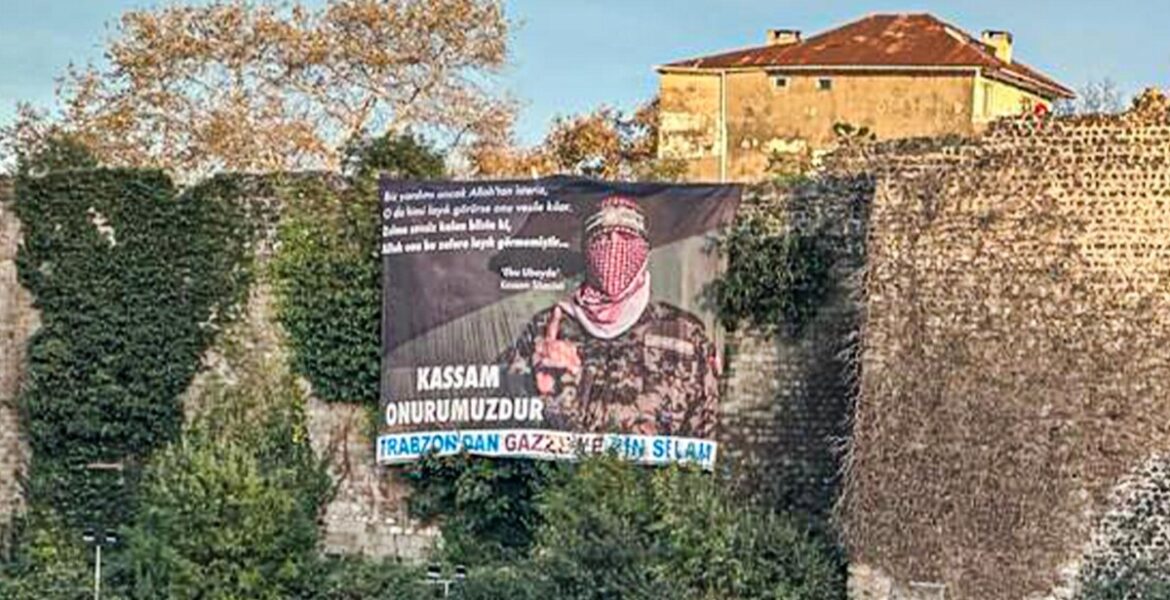A poster of a Hamas militant appeared on the Eastern Roman (Byzantine)-era walls of Trapezounta (Τραπεζούντα, Turkish: Trabzon), Turkey.
The poster of Abu Obaida, the Izz ad-Din al-Qassam Brigades spokesman, the armed branch of Hamas, was hung on the historical walls of Trapezounta on Wednesday.

Walls of Trebizond
The Walls of Trabzon (or the "Walls of Trebizond") are a series of defensive walls surrounding the old town of Trapezounta. The fortifications are sometimes called the Trabzon Castle (Turkish: Trabzon Kalesi) even though they did not function as a castle.
Their oldest part can be dated back to 1st century AD during the Roman Empire era. Historical sources provide information about older stages of their construction. Xenophon, who visited the city in 5th century BC also mentioned the existence of city walls.
In 1204, Trebizond consisted of a small fortified enceinte on a steep hill, with market, harbor, suburbs, and separately fortified monasteries outside the walls. Much of it was exposed to Turkish attacks, which began in 1223. Alexios II Komnenos, emperor of Trebizond (1297-1330), built a new wall that encompassed the harbor and lower city.
It was strengthened in 1378; the citadel, which contained the imperial palace and government offices, was frequently repaired until the fall of the Trapezuntine Empire. The commercial district, with numerous churches and the separate fortifications of the Genoese and Venetians, lay beyond the walls.
Names of many quarters are known from contemporary texts or later Turkish documents. In spite of its numerous monuments, Trebizond was surprisingly small, with only about 4,000 inhabitants in 1438. Powerful fortifications and an isolated location enabled it to survive numerous Turkish attacks until 1461.
Abu Obaida
Abu Obaida's actual name is not known, and neither are most of his personal details. He only appears wearing a keffiyeh covering his face.
In 2014, Israeli media outlets released a photo, allegedly of Abu Obaida, with the name Huzaifa Samir Abdullah al-Kahloot. However, the validity of the photo and name were denied by the al-Qassam Brigades, a senior leader of which said that Abu Obaida "does not and will not appear to the media," and that only a small number of people knew who he actually was.
The pseudonym likely refers to Abu Ubayda ibn al-Jarrah, companion of the Prophet Muhammad and the commander of Rashidun Caliphate forces during the Battle of the Yarmuk and Siege of Jerusalem during the 7th century.
Abu Obaida's first appearance was in 2006, when he announced the capture of Israeli soldier Gilad Shalit.
In October 2023, during the 2023 Israel–Hamas war, Abu Obaida said that Hamas will kill one civilian hostage every time Israel targets Gaza "without warning".
“We announce that every targeting of our people who are safe in their homes without warning, we will meet with the execution of our enemy’s civilian hostages,” Obeida said in his statement. He also said that the executions would be broadcast “in audio and video.”


